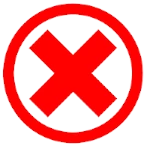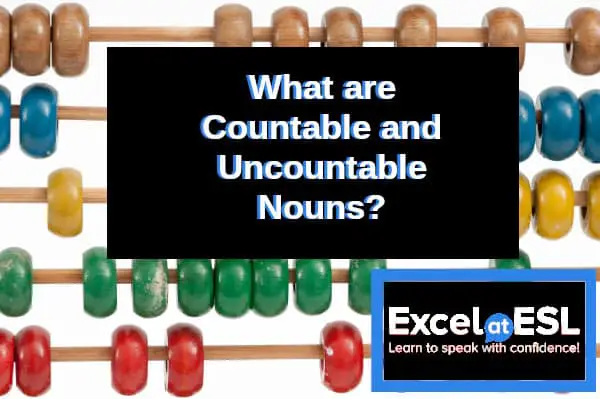English grammar can be a tricky subject, especially if your native language is one of the many, like Japanese, where nouns are rarely used as plurals. In English, we make many distinctions between nouns and the plural forms they can take. One of these distinctions is between Countable and Uncountable nouns.
The difference between countable and uncountable nouns is if they can be separated into individuals. Cat is countable because you can separate a group of cats. However, air is not because you cannot separate a mass of air into individual pieces. Unique things also cannot be counted, like New York.
What is a noun?
Most simply, a noun is a person, place, or thing. Nouns make up a big class of words in English. They are always the agents of a sentence, that is, they are always the doer of an action. We can further divide English nouns into two subcategories: common nouns and proper nouns.
Common Noun
A common noun is a noun that refers to an animal, thing, or idea. Unless it appears at the front of a sentence, a common noun will not be capitalized (begin with a big letter). Almost all common nouns can appear with an article (a/an/the). Here are some examples of common nouns:
- the cat, a cat
- the fork, a fork
- the dream, a dream
- the water
Proper Nouns
These types of nouns are used for the names of people, places, or special events. You will always find these types of nouns with a capital letter at the beginning of the word. You will rarely find a proper noun that can appear with an article (a/an/the). Let’s look at some examples of proper nouns:
- Christmas
- Frank Sinatra
- Seattle
If you aren’t sure if a word is a noun, there are some tests you can do to check whether a word’s part of speech. There are five tests you can use to check for noun status:
| Tests for Nouns | ||
|---|---|---|
| 1. Has a noun making vocabulary element | creation | |
| 2. Can make it plural | creations | |
| 3. Can make it possessive | creation‘s | |
| 4. Can appear with articles | a creation, the creation | |
| 5. Can fit in this frame sentence | (The) seem(s) all right. | |
| Source: Klammer, Thomas P., et al, Analyzing English Grammar. 7th ed., Pearson, 2013. | ||
From the chart above, “the” in the frame sentence is optional because not all nouns can appear with determiners.
 The Canada seems all right.
The Canada seems all right.
 Canada seems all right.
Canada seems all right.
Sometimes you will see “the” appear with proper nouns, such as in “the United States”. This happens when a proper noun is created using common nouns. You also find this happening with proper nouns like the United Kingdom, the Rocky Mountains (the Rockies), or the Pacific Ocean.
Why are some nouns countable and some aren’t?
You might find it confusing that we can count some nouns in English, but we can’t count others. However, it makes sense if you think about it. If someone asks you for five oranges, you know exactly what they need. They need five pieces of fruit. However, you don’t know what a person wants if they ask you for “five moneys”.
That could be any amount of money. It could be five one-dollar coins, or it could be five one hundred dollar bills. You don’t know. The idea is the same for all uncountable nouns. An uncountable noun is also known as a mass noun. This name can help you better visualize this idea. Nouns that can’t be counted are difficult to separate from their group. They are a mass or distinct group that cannot be easily divided into individual pieces.
Proper nouns are also all uncountable. Proper nouns are almost always unique things. They are people, places, or events. There is only one of these things in the world, so you can’t count them.
Examples of Uncountable Nouns
- water
- rice
- Justin Bieber
- electricity
- New York
- money
The opposite sort of idea is true for countable nouns. These words can easily be separated into individual parts, so we can count them.
Examples of Countable Nouns
- dog
- cat
- apple
- finger
- book
- knife
How can I tell if a noun is countable?
There are a variety of ways for you to predict whether a noun is countable or not. You do this by examining what types of words it can appear with and whether or not you can turn it into a plural. Let’s take a closer look at these strategies.
Pluralize it
One of the easier strategies is to try and turn the noun into a plural. If you can, then the noun is countable. Uncountable nouns do not have plural forms in English.
- cat -> cats
- animal -> animals
- pen -> pens
These are all examples of countable nouns. We can tell because we can attach the “-s” vocabulary element to the end of them to create a plural. However, not all words in English can take this plural marker. Like in the following words:
- fish -> fish
- ox -> oxen
So what else can we do to check if a word is countable?
Articles
We have spoken a bit about articles already. The English articles are “a/an” and “the”. The first set of articles are used for a single, undefined noun. In the phrase “a dog”, we do not know which dog is being spoken of, but we do know that it is only one dog. If a word can take the article “a/an”, we know it is countable because this article can only talk about a single entity.
“The” is a little trickier. We can use this article to talk both about single nouns and groups of nouns. So you can find this article being used with uncountable nouns as well as countable nouns. However, you will frequently find that countable noun groups will appear with their plural markers (this is trickier for words that appear as singular). So what else can we use to check if a word is countable?
Determiners
A determiner is similar to an article. They are words that appear before a noun, and they contain information about the amount of that noun. Some common determiners are:
- many
- each
- every
- this/that
- these/those
These are all words you can use to check if a noun is countable or not. This is because each of those words groups countable nouns together while still maintaining them as individuals. A phrase like “each dog” is talking about a group of dogs, but it still maintains a distinction between each individual dog. The same is true for each word in the list above.
If you can attach one of the determiners above to a noun, you will know that it is a countable noun.
How can I count Uncountable Nouns?
So how do we count uncountable nouns? Even though some nouns are considered uncountable, we can still count them in English. You need to use words that are countable and create a bigger phrase so you can count them. Consider the following words:
- bread
- sunshine
- rain
- water
These are all uncountable nouns. If you try our tests above, you will find that they fail all of them. However, if you need to talk about an amount of these you can do it by attaching specific words to the front of them.
- two loaves of bread
- five beams of sunshine
- three drops of rain
- four bottles of water
In the examples above, the words we attach to the uncountable nouns are themselves countable. We cannot separate uncountable nouns into individuals, so we get around this limitation by creating a more complex phrase using countable nouns to describe uncountable ones.
Conclusion
That was a quick look at countable and uncountable nouns. It isn’t too hard once you wrap your head around the way we use these words in English. You learned some simple tests you can use to check whether a word is countable or not. Remember the articles and determiners which can test the category of noun and you should be able to easily navigate the weird world of English nouns.
Happy studying!



